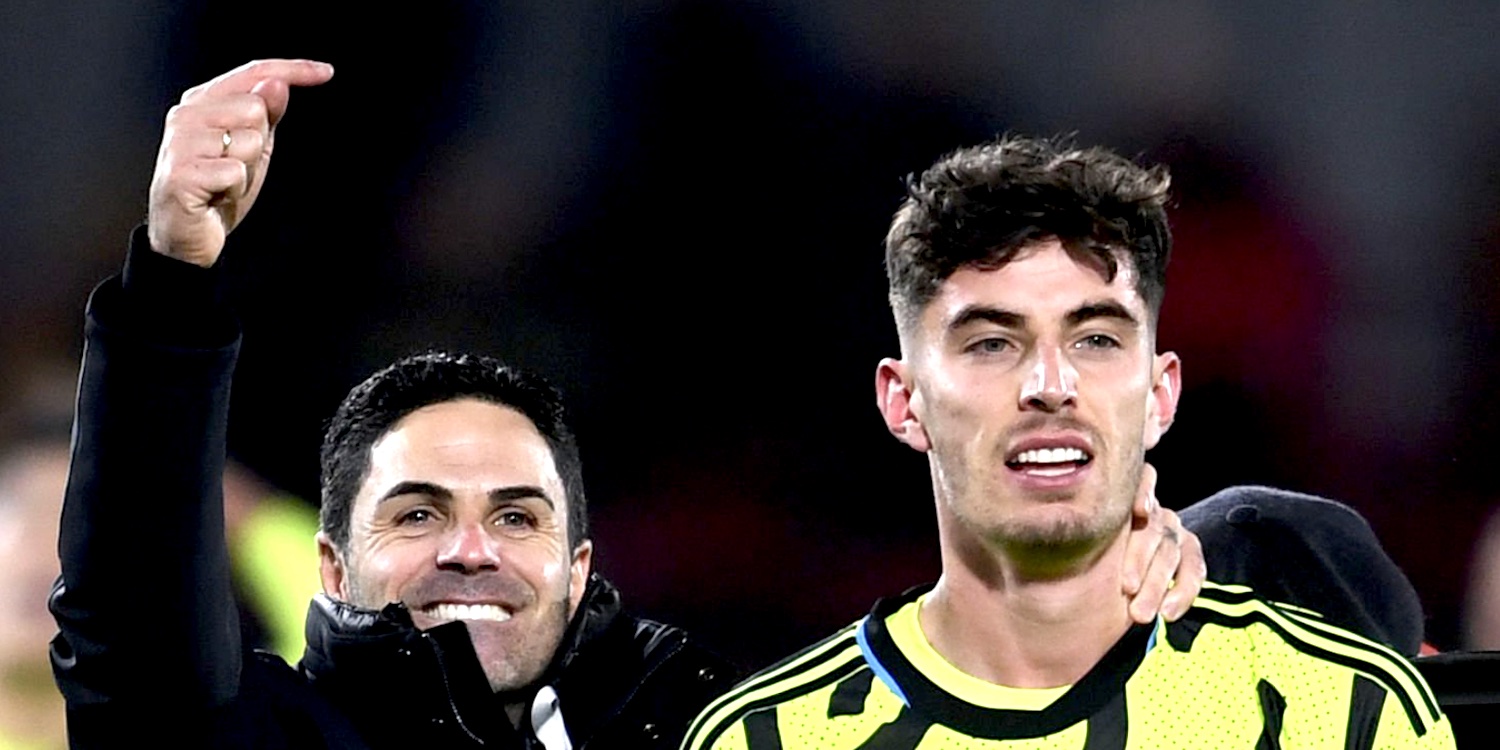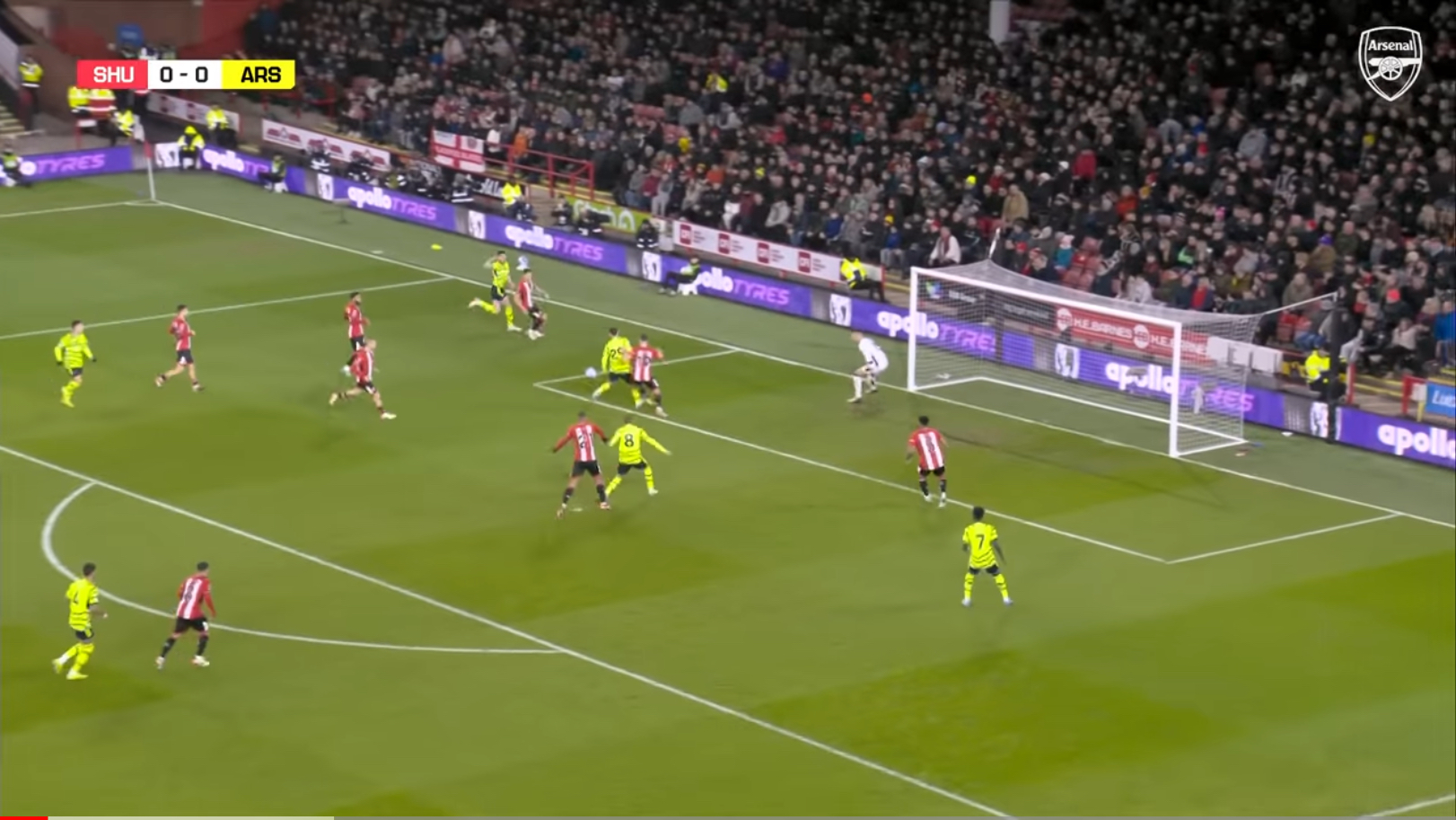- Home
- Features
- Business
- Active
- Sports
- Shop
Top Insights


A few weeks ago I wrote a piece about the flexibility of the squad assembled by Edu and Mikel Arteta. In the article, I argued that while the increasing depth of the Arsenal squad has been a welcome, if gradual, development, really it is the flexibility of the players in it that have allowed Arteta to problem solve and to reduce dependency on certain players.
The use of Jorginho has reduced the impact of the frequent absences of Zinchenko and Partey. Is Declan Rice a six or an eight? Both? Neither? Does it really matter? Ben White was purchased as a centre-half and accidentally became one of the best right-backs in Europe. Leandro Trossard can play in five different positions in the current formation, Takehiro Tomiyasu can play all across the back four, while even Bukayo Saka’s trajectory involved him moving from left wing-back to right-winger.
Adaptability and versatility are key tenets of what constitutes an ‘Arteta player.’ The purchase of Kai Havertz last summer, therefore, made sense in one respect due to his adaptability and ability to play in different positions. Though many felt (with some justification) that Arteta might have gone a step too far when he paid big money for the German.
Havertz lost his way at Chelsea because he tipped that precarious balance between versatility and nobody really knowing where he should play. That sense of doubt, of a player lacking a silhouette, permeated the early weeks and months of his Arsenal career. He sort of vaguely meandered between the ‘left eight’ and the number 9 positions without really playing in either position.
He had the look of an introverted mutual friend at a party, quietly cradling a can of Budweiser, occasionally standing on the extremity of a circle and pretending to laugh at a stranger’s anecdote. In recent weeks, however, that lack of definition his crept back onto the right side of the line between adaptability and unknowability.
The absence of Gabriel Jesus in recent weeks has meant Havertz has largely played at the tip of Arteta’s formation and the role has seen he and Arsenal take another step towards one another. Not only is Havertz joining in with the jokes, now he is holding court and fellow party goers gather round him.
In a pretty simple tactical sense, moving him into the centre-forward position has allowed Arsenal to utilise Jorginho at the base of the midfield and Declan Rice into more of a box to box role, where he has significantly added to his goal threat with strikes against West Ham, Sheffield United and Brentford.
With Jorginho anchoring the team, the absence of Oleksandr Zinchenko has become less of an issue and Jakub Kiwior has added greater defensive security by operating as more of an orthodox left-back. Though Arsenal have also enjoyed success by utilising Leo Trossard as a false 9 with Havertz rotating behind him creating a ‘big man little man’ strike partnership, this was the model used during the mauling of Burnley at Turf Moor.
That fluidity between Havertz and the ‘left eight’ has worked well for Declan Rice too. Havertz often moves away from the frontline to knit moves together, allowing Rice to run into the space behind him. We saw this for Rice’s header against Brentford of course. But Saka’s goal against Newcastle is another illustration.
Havertz drops away from the front line to control the ball and find Saka. Look at where Declan Rice runs to as he does.

Likewise, as the move for Trossard’s goal against Porto develops, look at where Rice is as Odegaard prepares his incredible assist.

Havertz has also created space for teammates with more ‘orthodox’ striker movements too, as we see for Martin Odegaard’s goal against Sheffield United at Bramall Lane. Havertz makes a front post run as Rice receives the ball, taking a defender with him before dummying the cut back for Odegaard to enjoy a free strike at goal.

This sort of fluidity also allows Arsenal to make subtle yet significant changes in game. During tough assignments against Brentford and FC Porto, Arteta was able to introduce Gabriel Jesus into the game and move Havertz back into midfield. From here he, somewhat ironically, scored the most classic centre-forward goal of his Arsenal career so far, meeting a Ben White cross with a towering header in the six yard area.
This video from FourFourTwo neatly illustrates the slightly different attacking shapes Arsenal adopted in recent wins over Sheffield United, Liverpool and Newcastle. Essentially, Arsenal have pretty much retained a model of having five players in a line across the front of the pitch, though sometimes at slightly different angles with slightly different support structures.
Havertz’s presence in the left half space is a constant of all those shapes, however. He has provided a focal point in a physical and technical sense but not always in a central striker spot. In fact, the spaces he attacks don’t alter a great deal depending on whether he is playing as an 8 or a 9, he just stays a little higher out of possession when he is a 9.
His ability to win the ball back from opponents high up the pitch has been the one true constant of his season, even when he wasn’t playing especially well, that element of his game didn’t drop. We saw this demonstrated most aptly in the build-up to his goal against Sheffield United. Clearly he has added some ingredients to the Arsenal attack that have become indispensable in recent weeks.
Firstly, the Arsenal attack looked a little small prior to his arrival. Jesus, Nketiah, Martinelli, Saka and Trossard all need a hand reaching the biscuit jar. Havertz has given the team some much needed inches in the final third. But what is so interesting is how he is simultaneously a very untraditional and very traditional striker.
As his confidence has increased, he has become far more willing to make runs off the shoulder of the last defender. I really recommend this video from Adam Keys which analyses his improvement in forensic detail. Among Adam’s observations is an increased proclivity to aim for the corners with his finishing (for better and for worse- he missed one on ones against Newcastle and Brentford because his finish was wide of the post) whereas previously his efforts were far more generous to opposition goalkeepers.
While his positioning is not hugely advanced compared to the other four players strung across the Gunners frontline in any given game, the positions he is taking up as the ball advances towards the penalty area are occupying centre-halves and creating space for teammates.
Essentially, he positions himself pretty parallel to his colleagues in the other four attacking lanes (which can make him hard to pick up and create space behind to run into if a defender follows him). But as the ball moves towards the area or the by-line, he often gets into much more typical striker positions.
His goal against Newcastle, for instance, is the most textbook penalty box poacher finisher imaginable. Of course, Porto and Brentford had some joy defending against this approach recently, so it is not bulletproof. Gabriel Jesus is very far from redundant and I imagine there will be plenty of Havertz 8 games and Havertz 9 games (though increasingly, it feels like he simply has to play, it’s just a question of which role).
Sometimes integrating a new or different player is a little like renovating your house, or getting a new kitchen. It can be painful and disruptive for a short while- until the renovation is finished and you start to reap the benefits. Kai Havertz’s transformation has allowed Arsenal to throw the kitchen sink at their opponents.
The post The Kitchen Sink appeared first on Arseblog … an Arsenal blog.
Recent Posts
Categories
Related Articles
Premier League 2025/26 Season Start Dates, Fixtures Announced (FULL LIST)
Premier League 2025/26 Season Start Dates and Fixtures have been announced. ...
ByglobalreutersNovember 23, 2024Exclusive: Arsenal leading chase for brilliant young Spanish talent with 6 G/A in 12 games this season
Mikel Arteta is slowly but surely leaning into his Spanish connection to...
ByglobalreutersNovember 23, 2024Napoli vs. Roma – Serie A: Match Preview & Predicted Lineups
Claudio Ranieri is back at Roma and marks his return against Napoli...
ByglobalreutersNovember 23, 2024Lionel Messi delivers important message to Barcelona’s coach Hansi Flick after incredible start
As Barcelona's 125th anniversary celebration approaches, club legend Lionel Messi has praised...
ByglobalreutersNovember 22, 2024






Leave a comment